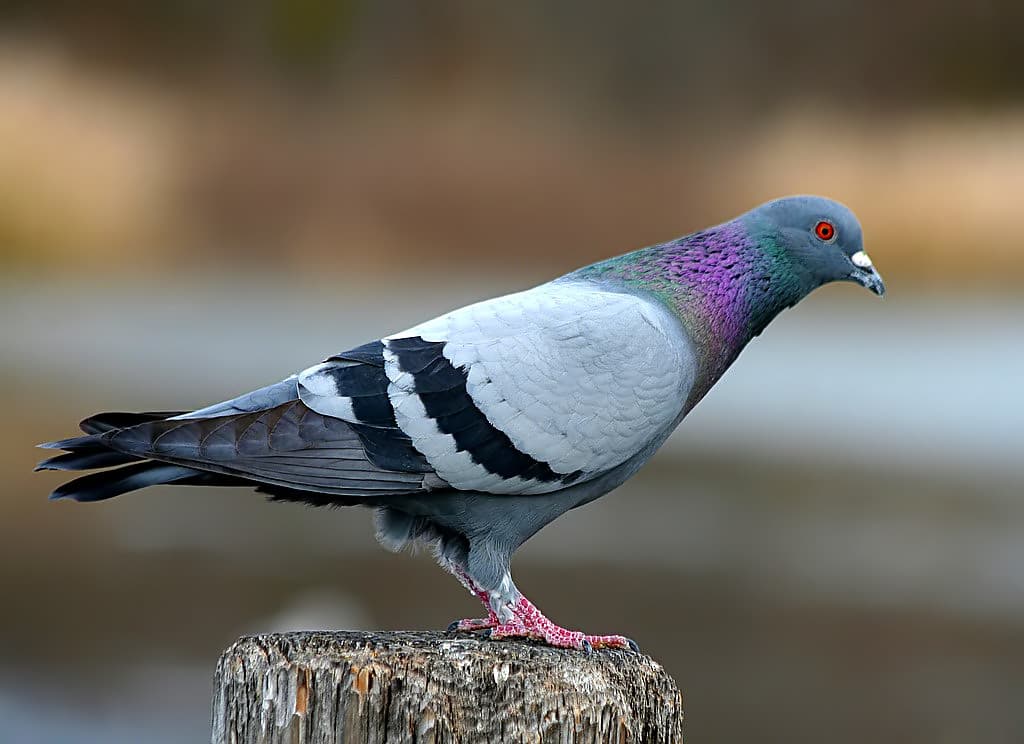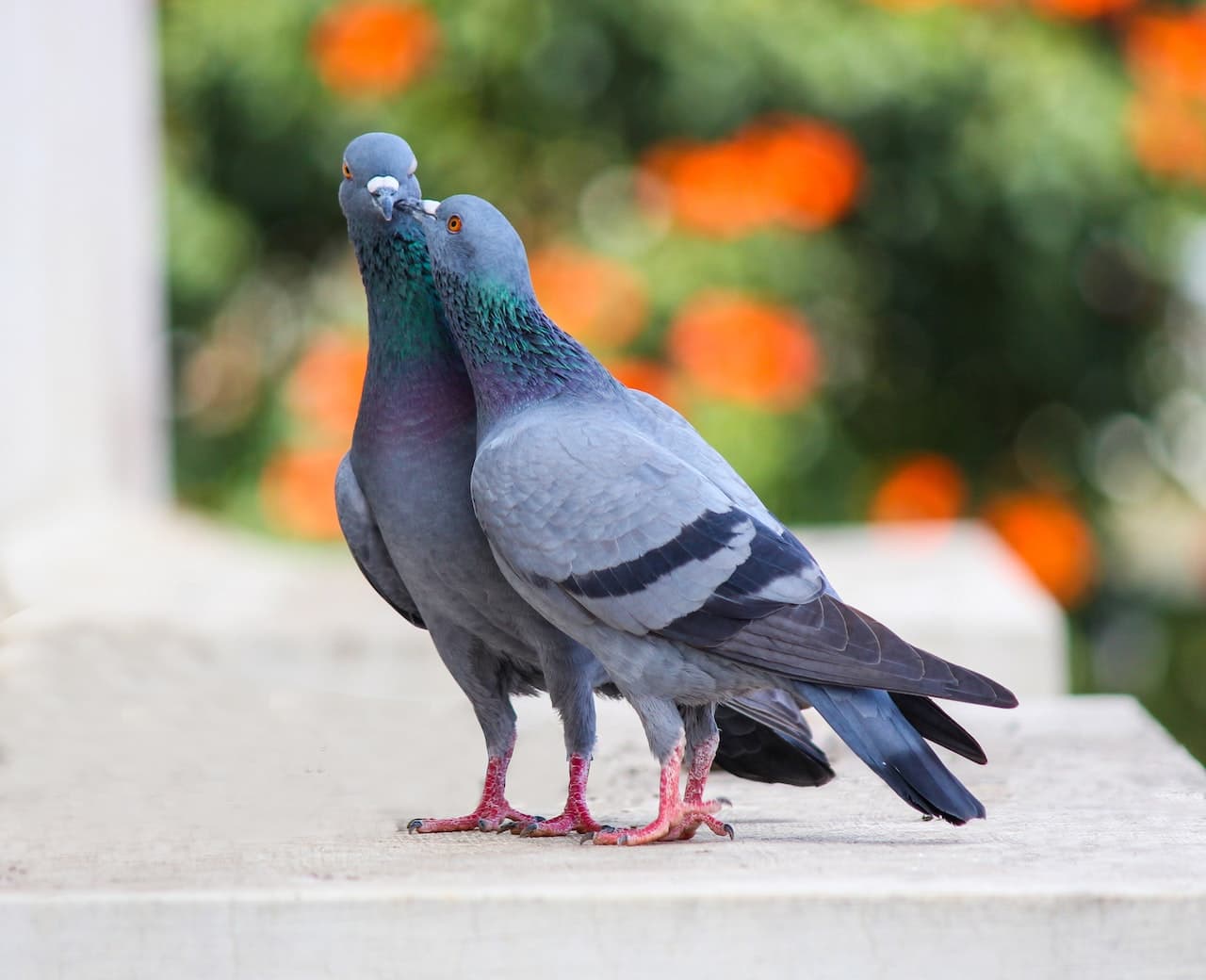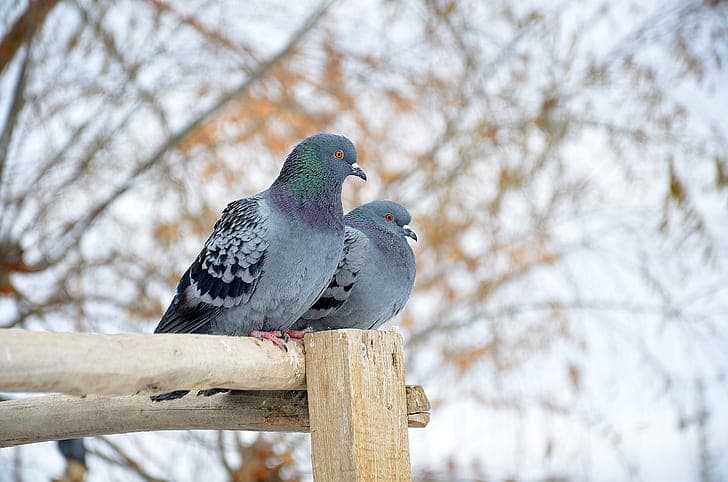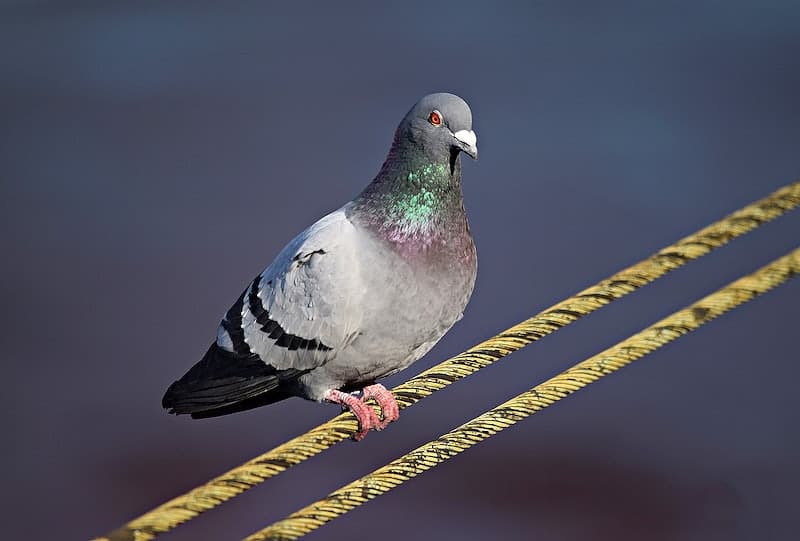Definitely a familiar face here, right? We all know rock pigeons (ព្រាបស្រុក), and the way they look is very easy to recognize. No matter what city you go to in any part of the world, you will always see these pigeons. The rock pigeon also goes by the name common pigeon or rock dove. We all know what they look like and where they like to roam, but there are more. Let’s check out some more details about rock pigeons with me below.
Appearance

Adult rock pigeons can grow from 29 to 37 centimeters long, and could be bigger if they are overfed. A rock pigeon is a plump bird with a small blue-gray head and a straight thin bill. The plumage of rock pigeons varies but the most common form is bluish-gray with 2 black bars on the wings. The wings are broad and pointy while the tail is round and wide, and their legs are short. At the same time, most rock pigeons also have glossy yellowish, greenish, and reddish-purple iridescent throat feathers.
Behavior

As you probably already know, these pigeons gather in flocks, running or walking on the ground and pecking for food. Their flocks are typically made up of an equal number of both sexes. When alarmed, the flock will immediately fly into the air and circle several times before coming back down. Their sudden takeoff is very loud which is the sign to alert other pigeons in the flocks to take flight. The faster they beat their wings, the louder it is which means danger is near. Rock pigeons are usually gregarious but they will live in pairs during the breeding seasons in spring and summer.
When threatening a rival, a rock pigeon will bow and coo and then inflate its throat and walk in a circle. Male rock doves do the same when courting a mate but strut around the female. And then, the male may grasp the female’s bill to regurgitate food as a courtship gesture. If the courtship is successful, the female will crouch when she is ready to mate and the male jumps on her back. The male will bring the materials for the females to build a nest, and he will take turns incubating the eggs. Male rock doves incubate from mid-morning to late afternoon and females do it from late afternoon to mid-morning.
Feeding & Habitats

Rock pigeons are omnivores but they have a preference for plant matter such as fruits and grains. Some of their most favorite food are berries, cherries, grass seeds, maize, oats, and other things they can find. In the cities, they live on discarded food and other offerings of birdseed in the gardens, parks, and squares. City rock pigeons feed on many unnatural foods such as bread, peanuts, popcorn, and more.
The range of rock doves is in Asia, Europe, and North America. Rock pigeons are very common in cities and towns but they also live in farmlands and fields. These birds like open and semi-open environments where they can fly and forage for food. There are wild rock pigeons that have archetypal habitats which are rock ledges and rocky cliffs. These areas are where they roost and breed in the wild since not all rock pigeons live in the cities.
Predators
Rock pigeons are one of the most common prey for a wide range of raptors out there around the world. The natural predators of these birds are Eurasian sparrowhawks and Peregrine falcones, they normally catch and feed on rock doves. Besides these two, some other predators are American kestrels, crows, gulls, opossums, owls, raccoons, ravens, and red-tailed hawks. Meanwhile, domestic and feral cats prey on their eggs and young.
Related Post: Spotted Dove Facts
